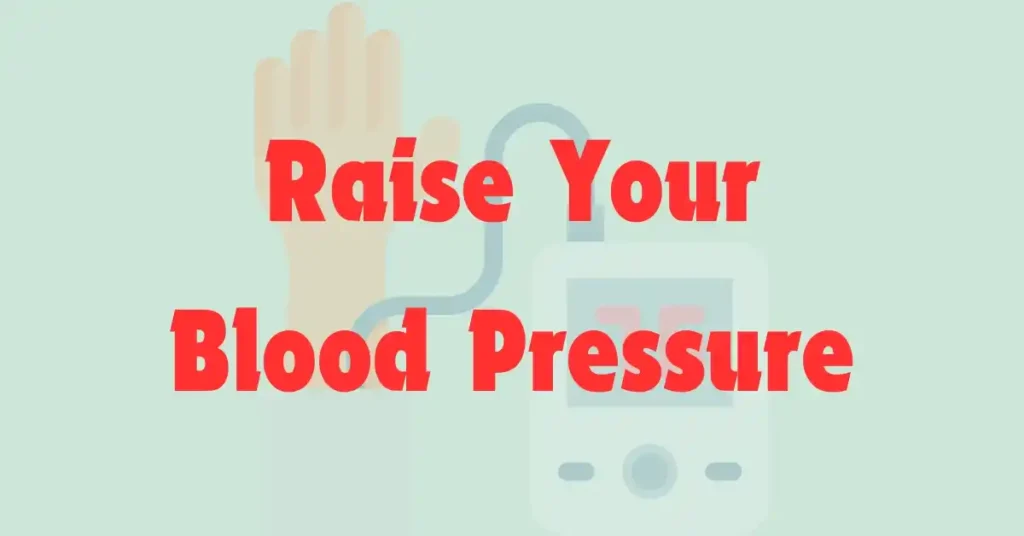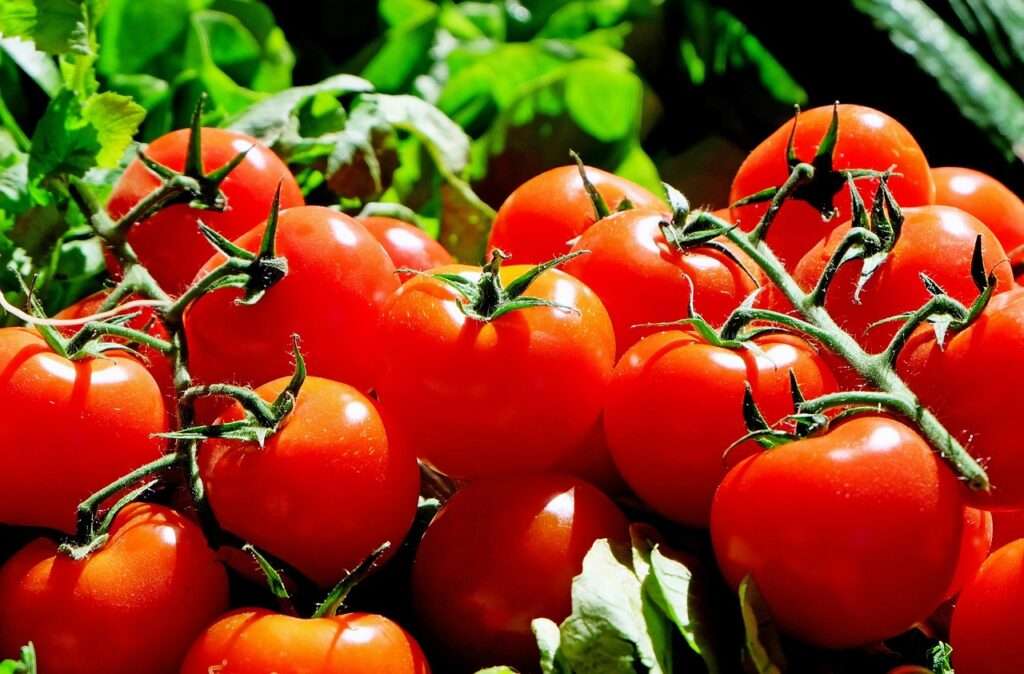Introduction
Are you feeling dizzy, fatigued, or on the verge of fainting more often than you’d like? You could be contending with low blood pressure, also called hypotension. Don’t worry, though – you’re not alone, and there are plenty of ways to tackle this issue. In this comprehensive guide, we’ll dive into the world of low blood pressure, exploring its causes, symptoms, and most importantly, how to raise your blood pressure quickly. So, buckle up (but not too tightly, we don’t want to restrict blood flow!) as we embark on this journey to better health.
What Exactly is Low Blood Pressure?
Defining the Pressure
Low blood pressure, or hypotension as the medical folks call it, occurs when the force of blood pushing against your artery walls is lower than normal. But what’s “normal,” you ask? Well, a typical reading is less than 120/80 mm Hg. If your numbers consistently fall below 90/60 mm Hg, congratulations (or should I say, condolences?), you’ve got low blood pressure!
The Usual Suspects: Common Causes
Now, why does this happen? There’s no one-size-fits-all answer, but here are some common culprits:
- Dehydration: Not drinking enough water? Your blood volume drops, and so does your pressure.
- Blood Loss: This one’s pretty obvious – less blood means less pressure.
- Medications: Some meds, especially those for high blood pressure, can sometimes work a little too well.
- Nervous System Disorders: Your body’s internal “plumbing system” can get a bit wonky with certain conditions.
- Dietary Deficiencies: Lacking in B12 or folate? Your blood pressure might be feeling the pinch.
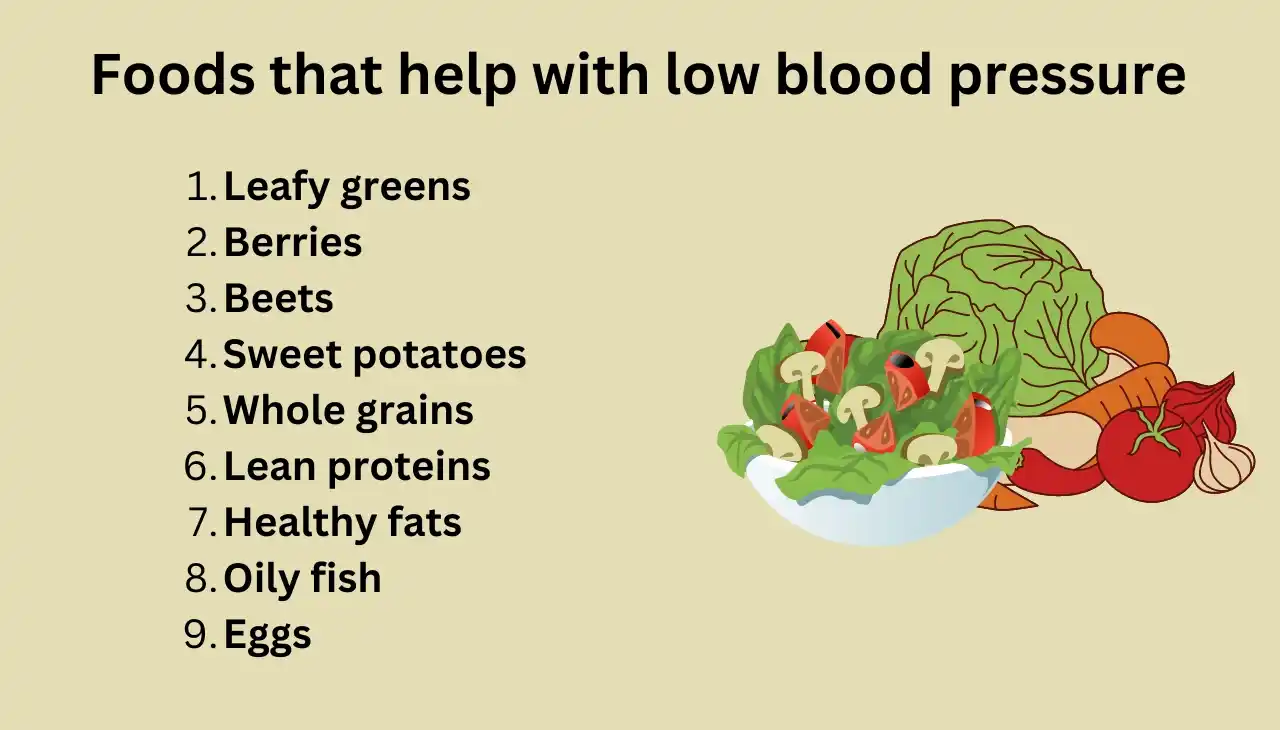
How to raise your blood pressure immediately at home
If you need to raise your blood pressure quickly at home, here are some effective methods you can try:
- Drink Water: Dehydration can lower blood pressure, so drinking water can help increase it.
- Eat Something Salty: Salt can raise blood pressure. Try eating salty snacks like pretzels or salted nuts.
- Lie Down and Elevate Your Legs: This helps blood flow back to your heart and can increase blood pressure.
- Compression Stockings: Wearing these can help prevent blood from pooling in your legs.
- Caffeine: Drinking a cup of coffee or tea can temporarily raise blood pressure.
Remember, these are quick fixes. If you frequently experience low blood pressure, it’s important to consult with a healthcare professional to address the underlying cause.
Low blood pressure emergency treatment at home
In an emergency situation where someone is experiencing very low blood pressure (hypotension), here are some immediate steps you can take at home:
- Elevate the Legs: Have the person lie down and elevate their legs about 6-12 inches to help blood flow back to the heart.
- Keep Them Warm: Cover the person with a blanket or coat to maintain body warmth.
- Hydrate: If the person is conscious and able to drink, give them water to help increase blood volume.
- Salt Intake: If possible, provide a salty snack to help raise blood pressure.
- Call Emergency Services: If the person shows severe symptoms like fainting, confusion, or rapid, shallow breathing, call emergency services immediately.
These steps can help stabilize the person until professional medical help arrives. It’s crucial to address the underlying cause of low blood pressure with a healthcare provider to prevent future emergencies.
What is a dangerously low blood pressure for a women
Dangerously low blood pressure for women, as for men, is generally considered to be when blood pressure readings fall below 90/60 mm Hg and are accompanied by symptoms.
- Dizziness or lightheadedness
- Fainting
- Nausea
- Fatigue
- Blurred vision
- Rapid, shallow breathing
- Cold, clammy skin
- Weak but rapid pulse
- Loss of consciousness
If a woman experiences these symptoms, it’s important to seek medical attention immediately as it can lead to shock or other serious complications.
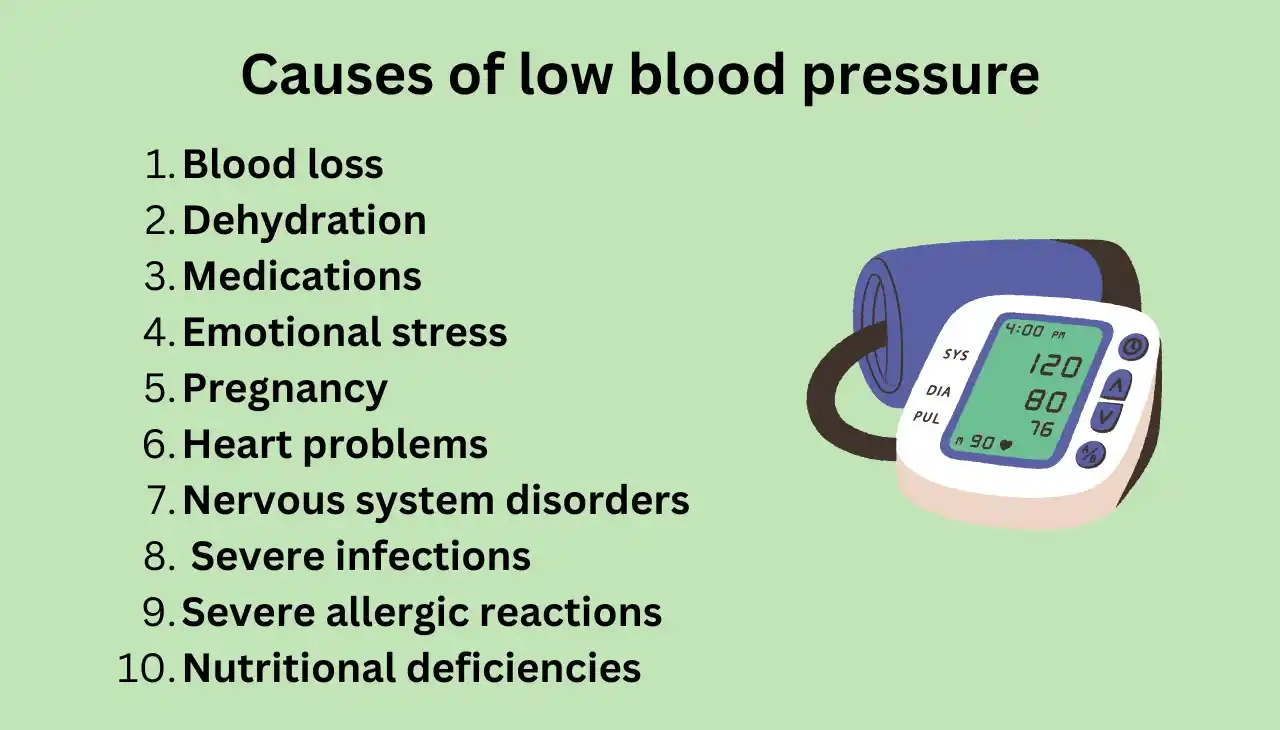
How can you determine if you have low blood pressure
To determine if you have low blood pressure (hypotension), you can look for the following signs and symptoms:
- Dizziness or Lightheadedness: Feeling unsteady or faint.
- Fainting (Syncope): Temporary loss of consciousness.
- Nausea: Feeling sick to your stomach.
- Fatigue: Feeling unusually tired or weak.
- Blurred Vision: Seeing things out of focus.
- Rapid, Shallow Breathing: Breathing quickly and shallowly.
- Cold, Clammy Skin: Skin that feels cool and damp.
- Weak but Rapid Pulse: Fast heartbeat that feels weak.
- Confusion or Trouble Concentrating: Difficulty thinking clearly.
- Headache: Pain or discomfort in the head.
If you experience these symptoms, it’s a good idea to check your blood pressure using a home monitor. A reading below 90/60 mm Hg is generally considered low.
Foods that help with low blood pressure
Here are some foods that can help raise low blood pressure:
- Salted Foods: Adding a bit more salt to your diet can help increase blood pressure. Try salty snacks like pretzels, salted nuts, or pickles.
- Caffeinated Beverages: Coffee and tea can temporarily raise blood pressure by stimulating the cardiovascular system.
- Hydrating Foods: Staying hydrated is crucial. Drink plenty of water and incorporate hydrating foods such as cucumbers, coconut, and watermelon.
- Foods High in Vitamin B12: Eggs, meat, dairy products, and fortified cereals can help prevent anemia, which can cause low blood pressure.
- Foods High in Folate: Leafy greens, beans, lentils, and citrus fruits are great sources of folate, which is important for maintaining healthy blood pressure levels.
- Salty Seafood: Canned tuna and smoked fish are good options for a quick sodium boost.
- Olives: These are not only tasty but also high in sodium, which can help raise blood pressure.
- Cottage Cheese: This dairy product is rich in sodium and can be a good addition to your diet.
Including these foods in your diet can help manage low blood pressure.
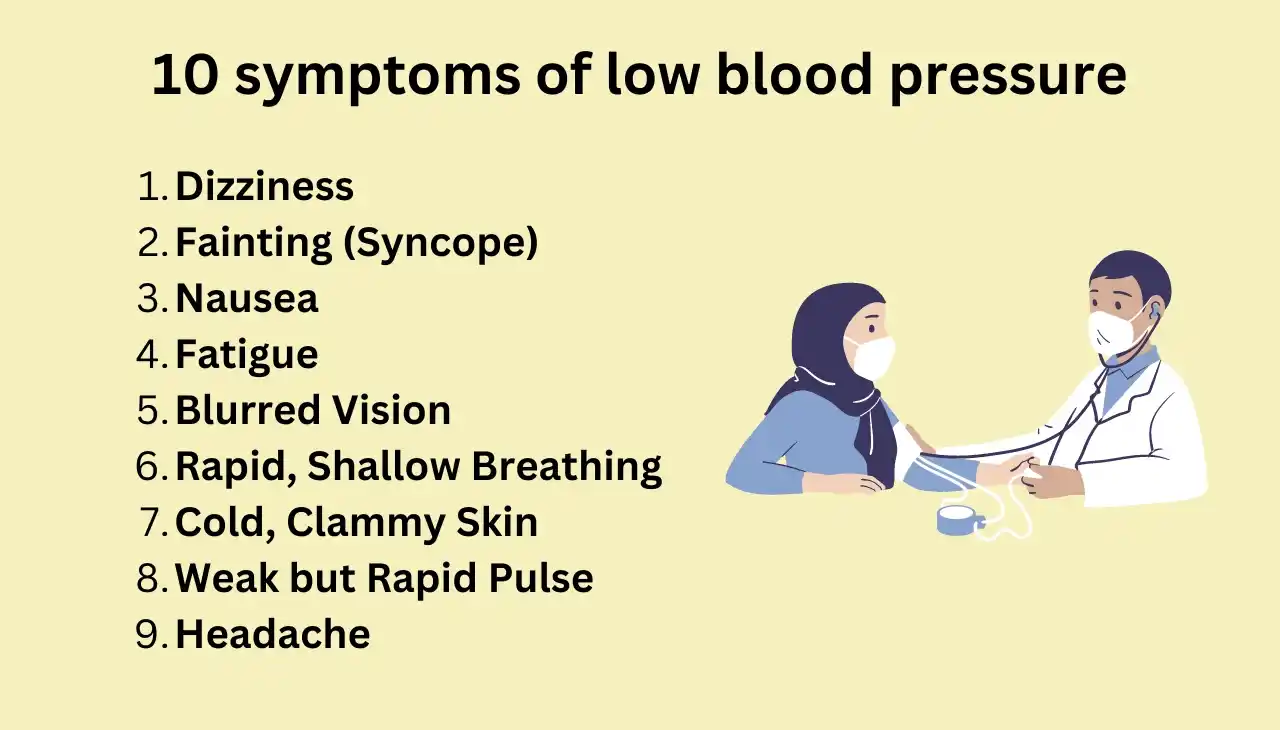
Causes of low blood pressure
Low blood pressure, or hypotension, can be caused by a variety of factors, including:
- Dehydration: When your body loses more water than it absorbs, your blood pressure may drop.
- Heart Problems: Conditions like extremely low heart rate (bradycardia), heart valve problems, heart attack, and heart failure can lead to low blood pressure.
- Endocrine Problems: Disorders such as adrenal insufficiency (Addison’s disease), low blood sugar (hypoglycemia), and diabetes can cause low blood pressure.
- Severe Infection (Septicemia): When an infection enters the bloodstream, it can result in a life-threatening reduction in blood pressure.
- Blood Loss: Losing a lot of blood due to a big injury or internal bleeding lowers the volume of blood in your body, resulting in a significant drop in blood pressure.
- Lack of Nutrients: A deficiency of vitamins B-12 and folate may hinder your body from generating enough red blood cells, resulting in low blood pressure.
- Medications: Some drugs, such as diuretics, beta blockers, and some antidepressants, can lower blood pressure.
Understanding these causes can help in managing and preventing low blood pressure.
10 symptoms of low blood pressure
Here are 10 common symptoms of low blood pressure (hypotension):
- Dizziness: Feeling dizzy or faint.
- Fainting (Syncope): Temporary loss of consciousness.
- Nausea: Feeling sick to your stomach.
- Fatigue: Feeling very fatigued or feeble.
- Blurred Vision: Seeing things out of focus.
- Rapid, Shallow Breathing: Breathing quickly and shallowly.
- Cold, Clammy Skin: Skin that feels cool and damp.
- Weak but Rapid Pulse: Fast heartbeat that feels weak.
- Confusion or Trouble Concentrating: Difficulty thinking clearly.
- Headache: Pain or discomfort in the head.
These symptoms can vary in severity and may indicate an underlying health issue. If you or someone you know frequently experiences these symptoms, it’s important to consult with a healthcare professional.
Best medicine for low blood pressure
The best medicine for low blood pressure (hypotension) depends on the underlying cause and severity of the condition. Here are some commonly prescribed medications that help you maintain your blood pressure:
- Midodrine: This medication works by tightening blood vessels, which increases blood pressure.
- Fludrocortisone: A corticosteroid that helps increase blood volume by boosting sodium levels in the body.
- Droxidopa (Northera): Used to treat neurogenic orthostatic hypotension, it helps increase blood pressure by converting to norepinephrine.
- Phenylephrine: A decongestant and vasopressor that can help raise blood pressure.
When it comes to your health, it’s crucial to have a conversation with a healthcare professional to find the best possible treatment for your unique situation.
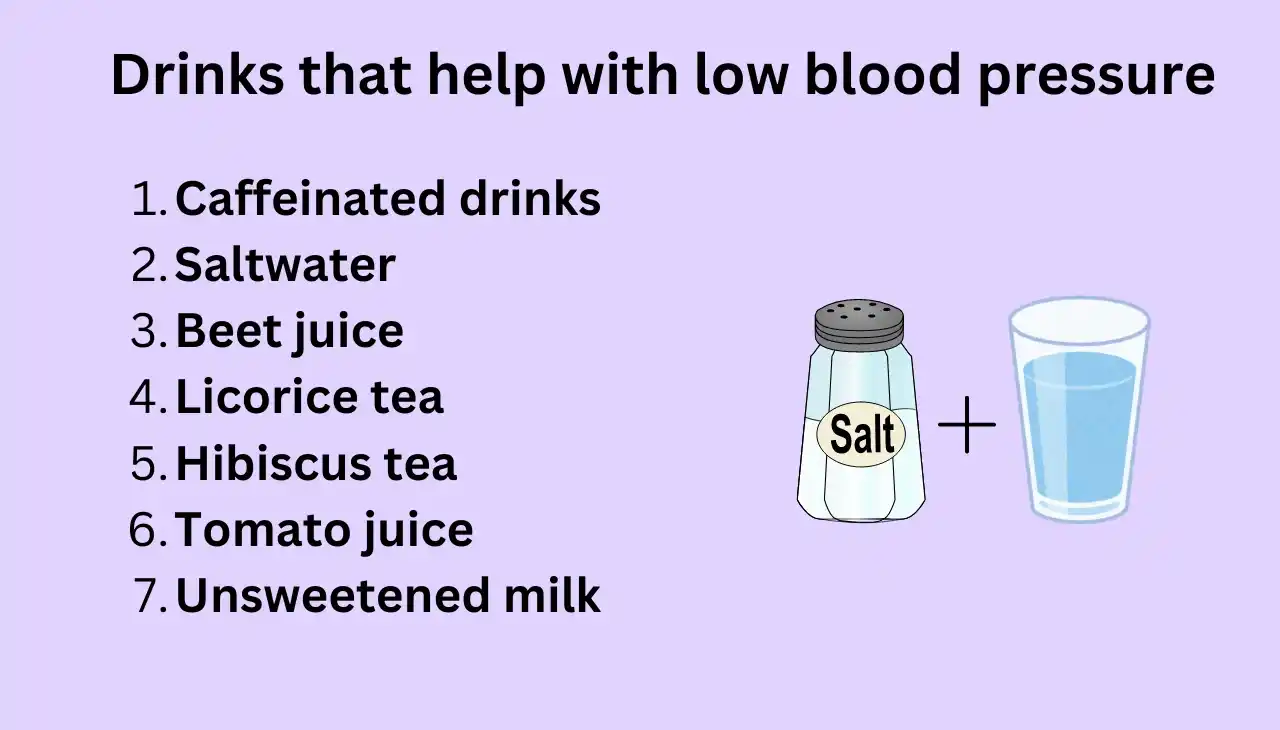
10 Effective Tips to Raise Your Blood Pressure Quickly
- Hydration and Blood Pressure
- Increased fluid intake can quickly increase blood pressure.
- More fluids lead to more blood volume, resulting in higher pressure.
- Aim for 8-10 glasses of water daily, spaced throughout the day for best results.
- Embrace Salt in Moderation for Low Blood Pressure
- Sodium aids in retaining water, increasing blood volume and pressure.
- Caution: Consult a doctor before salting to avoid health risks.
- Rethink Nightcaps for Low Blood Pressure
- Alcohol is a diuretic, causing increased urination, lowering blood pressure.
- Drinking less alcohol can save money on drinks and improve liver health.
- Compression Stockings for Low Blood Pressure
- Prevent blood pooling in legs, promoting efficient body circulation.
- Ideal for long periods of sitting, standing, or travel.
- Benefits legs and blood pressure.
- Eat Like a Hobbit
- Channel your inner Frodo and opt for smaller, frequent meals.
- Eating big meals can lead to a decrease in blood pressure.
- Smaller meals maintain stability.
- Aim for 5-6 small meals daily, allowing for second breakfast indulgence.
- Mastering Positioning for Blood Pressure
- Techniques include crossing legs while sitting, squeezing a stress ball, and clenching buttocks.
- Promotes blood flow and provides quick relief from low BP symptoms.
- Getting Moving for Cardiovascular Health
- Regular exercise is beneficial for cardiovascular health and blood pressure management.
- Aim for moderate exercise like brisk walks, swimming, or cycling.
- Start slow for beginners, gradually increasing duration and intensity.
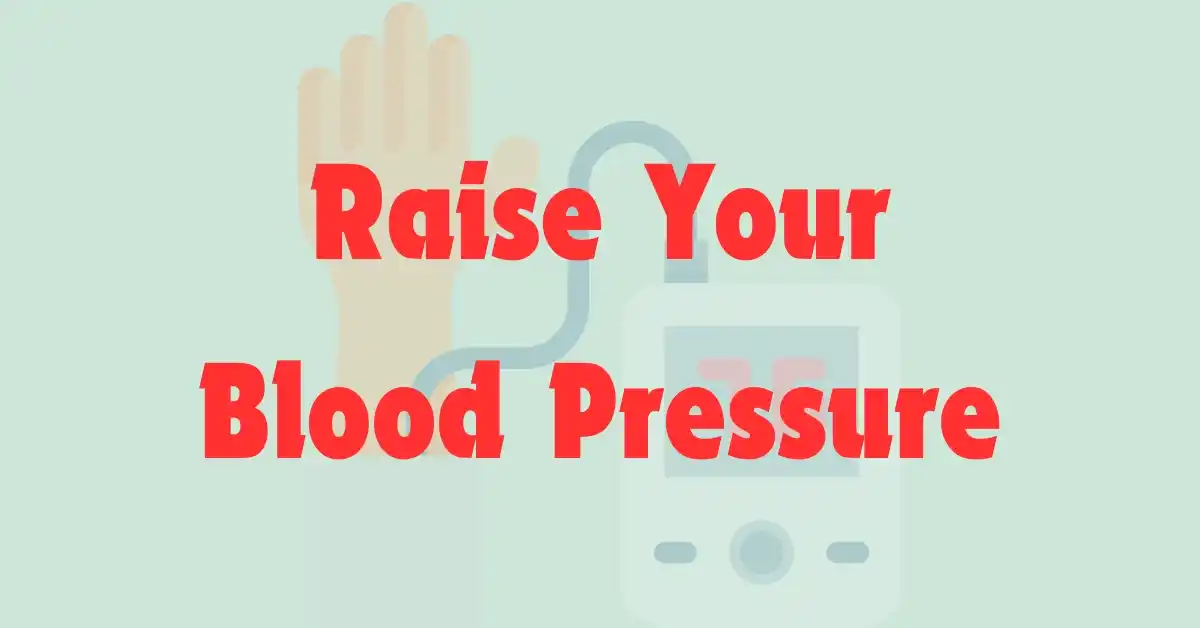
- Addressing Vitamin Deficiencies
- Low blood pressure may indicate missing key nutrients.
- B12 and Folate are crucial for producing red blood cells, boosting blood pressure.
- Include B12 and folate-rich foods in your diet.
- Consult with a doctor about supplements if needed.
- Cooling with Hot Showers
- Hot water can dilate blood vessels, lowering blood pressure.
- The hot water effect is similar to a summer siesta.
- The Lukewarm Solution: Choose warm showers and keep them shorter.
- This will improve blood pressure and water bill.
- Consult Healthcare Providers for Low Blood Pressure
- Consult with a healthcare provider if struggling with low blood pressure.
- Consider medical interventions for chronic low blood pressure.
- Regular check-ups to ensure healthy blood pressure and early detection of potential issues.
Conclusion
Living with low blood pressure doesn’t have to mean constantly feeling dizzy or fatigued. By implementing these tips and working closely with your healthcare provider, you can take control of your blood pressure and get back to living your best life. Be patient with yourself as you find the right combination of strategies for you. And hey, look on the bright side – at least you have a great excuse to eat more salty snacks!
So, are you ready to pump up that pressure? Your heart (and the rest of your body) is counting on you. Let’s get that blood flowing!
FAQ
Can low blood pressure be dangerous?
While low blood pressure is often less concerning than high blood pressure, it can be dangerous in certain situations. Severely low blood pressure can reduce the blood flow to your vital organs, potentially leading to shock, which is a life-threatening condition. Additionally, sudden drops in blood pressure can cause dizziness or fainting, which could result in falls and injuries. However, for many people, low blood pressure doesn't cause any symptoms and isn't a cause for concern. It's important to pay attention to your symptoms and consult with a healthcare provider if you're experiencing frequent dizzy spells, fainting, or other troubling symptoms associated with low blood pressure.
Is it possible to have low blood pressure and high blood pressure at the same time?
Great question! Variable hypertension, also known as labile hypertension, is a condition where blood pressure fluctuates between high and low, sometimes rapidly. This variability can be caused by factors like certain medications, autonomic nervous system disorders, or endocrine problems. It's crucial to keep a blood pressure log and discuss it with your healthcare provider to adjust your treatment plan or investigate underlying causes. This condition can lead to episodes of low blood pressure, especially when changing positions or after eating.
Can certain foods help raise low blood pressure?
Blood pressure can be raised by certain foods, such as salty foods, caffeine, licorice tea, high-water content fruits, and B-vitamin rich foods. These foods can increase blood pressure, but it's important to consult a doctor before consuming them. Caffeine can cause a short-term spike, while licorice tea contains glycyrrhizin, which can raise blood pressure. High-water content fruits like watermelon, cantaloupe, and strawberries help with hydration and blood volume. However, these foods should be part of a balanced diet and used in conjunction with other healthcare strategies.
How does exercise affect low blood pressure?
Exercise can be a double-edged sword when it comes to low blood pressure. In the short term, exercise increases blood pressure to provide oxygen to muscles, which can alleviate symptoms in people with low blood pressure. In the long term, exercise improves cardiovascular health and heart efficiency, potentially leading to a modest increase in baseline blood pressure. However, exercise can sometimes cause a drop in blood pressure, especially after a workout or in hot conditions. To exercise safely with low blood pressure, start slowly, gradually increase intensity, stay hydrated, avoid exercising in very hot conditions, cool down properly after workouts, and be aware of symptoms like dizziness or fainting. Before beginning any new exercise routine, it's important to consult with a healthcare provider.
Can stress or anxiety cause low blood pressure?
Stress and anxiety are often linked to high blood pressure, but they can also lead to low blood pressure. Acute stress responses, chronic stress, hyperventilation, and eating habits can trigger a vasovagal response, causing a sudden drop in heart rate and blood pressure. Chronic stress can lead to fatigue and a weakened immune system, contributing to low blood pressure in some individuals. Hyperventilation, a sudden, shallow breathing response, can cause a temporary drop in blood pressure due to changes in blood chemistry. Eating habits can also be affected by stress and anxiety, potentially leading to poor nutrition or dehydration, both contributing to low blood pressure. The relationship between stress, anxiety, and blood pressure can vary greatly between individuals, with some experiencing an increase in blood pressure and others experiencing a decrease. Seeking healthcare advice is recommended for managing stress and blood pressure levels.
